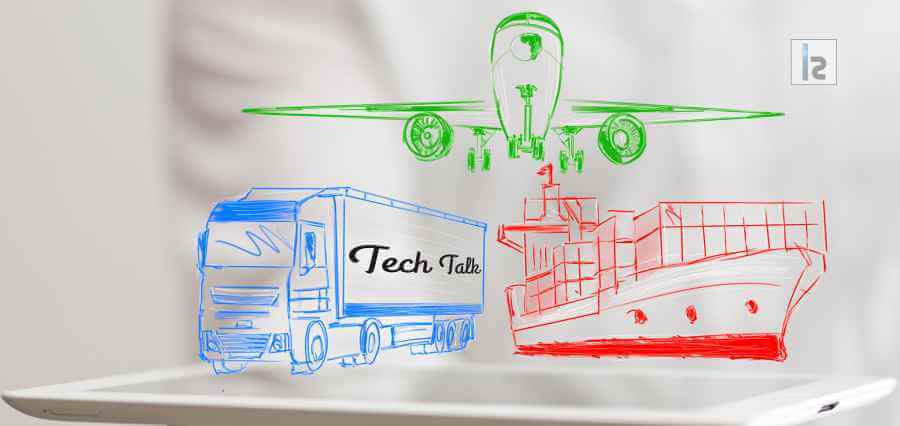Digital technologies have saturated and disordered almost all segments, and logistics companies are no exception. Integrating the optimization and efficiency in speed and seizing the moment are the keys to success in today’s extremely competitive business market. The developing technology is the key enabler allowing companies to realize these aspects. Logistics and transportation are regarded as the backbone of the economy, providing an efficient and cost-effective flow of goods on which other commercial sectors depend. The logistics industry is evolving globally; it is the combination of infrastructure, technology and new types of service providers. This defines whether the logistics industry is able to help its customers with cost-effective operations and effective services.
Leveraging Technology
An Independent analysis reveals that the transportation and logistics companies are increasing revenue and working with the vision to standardize and streamline structures and processes. They are leveraging technology for developing industry oriented and innovative solutions. They have a strong belief that technology is the key enabler for strategic planning.
On an average, transportation and logistics enterprises invest about five percent of their annual returns in digital operations, majorly focusing on digitizing their customer interface. The thrust these days is exclusively on mobile apps and solutions that offer a personalized experience for their customers. However, the majority of the companies are increasingly using digital technology to expose new business models, dedicated to the establishment of value-added services and innovative solutions.
Logistics companies are leveraging technology not just to improve the efficiency of operations, but also to transform the way operations take place. The use of robots in giant warehouses is already well-known, as is the driverless, remote-controlled vehicles. Technology drives a swing to a customer gripped operating model, allowing the delivery of personalized and customer-focused logistics, with immediate and faster cycle times.
Improve Operations through Big Data
The development of the technology influences the algorithms to crunch Big Data, unlocking acumens and opportunities that were not possible earlier. These insights are enabling streamline operations and optimization of the supply chain. The automation based on data, mainly automated load structure and augmenting the inbound and outbound movement of cargo, enables the optimal use of existing resources. This reduces the generation of the waste and facilitates lean operations.
Mobile solutions enable greater transparency into the logistics operations. Effective simultaneous fleet management solution paves a creative way for uberization of trucks and other delivery vehicles. An all-inclusive data based catalog and supply chain management system exposes silos and eases end-to-end visibility to inventory, orders, and shipments across the supply chain. This type of transparency improves the operations associated with locating the inventory movement. Also, reduces the network-wide inventory levels, and enable managers to respond dynamically and in real-time to each and every event or issue that disturbs the supply chain.
Analytical data and information generates explicit greenhouse discharges and carbon footprints of truck and machinery maneuvers. This permits the organizations to take steps to become a carbon-neutral organization, thereby supporting Green logistics. The integration of machine learning in supply chain management empowers turning piles of passive data into actionable BI.
Enhancing the Security
The disruption in the supply chain creates global business risks for logistics companies. Besides, technology enables revitalizing the supply chain in many ways. Digital locks upsurge the security high grounds of the inventory, offering robust layers of security in association with the physical security. The planning of optimum route in combination with real-time tracking of the cargo movement through the mobile apps proves essential in navigation, avoids congestion points and minimizes risks.
Influence of IoT
The IoT has been a vital entity for logistics and transportation organizations. Integration of IoT in the logistics is extremely contributing to warehouse management solutions, enabling precision movement and accurate tracking and packaging of goods. The implementation of IoT gadgets in logistics is fundamentally endless, ranging from tracking the packaged and transported goods in a temperature- controlled manner for ensuring the correct package reaches the correct setting at the specified time and more.
Future Roadmap
The next big thing to arise in the transportation and logistics industries is the extreme and innovative use of drones. This extensive use of drones would bring rapidity in things considerably, decrease the hassles, strain and provide with efficient and cost-effective operations in transportation and logistics companies.
The logistics industry continues to witness growth due to the growth in retail, e-commerce and manufacturing segments. This industry is expected to reach over two billion USD in the coming decade. Escalation of e-commerce logistics and increased domestic consumption will lead ways towards the industrial revolution in the coming years. With a potential to grow and improve, the service-oriented logistics industry is ready to swell beyond the horizons in the near future.
In addition, the developments in the instant future will include connected and autonomous trucks, warehouse robotics, and smart warehouse solutions. This will speed up the logistics industry operations, and improve their accuracy and efficiency.


